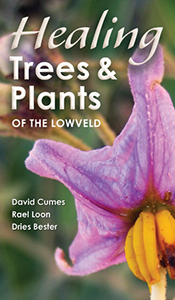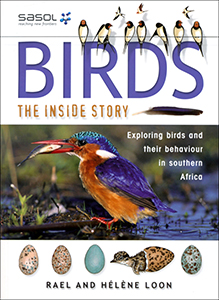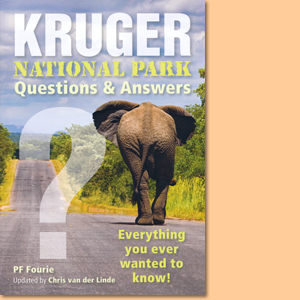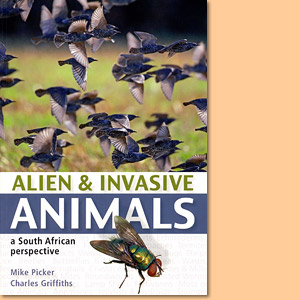Healing trees and plants of the Lowveld, by David Cumes, Rael Loon and Dries Bester
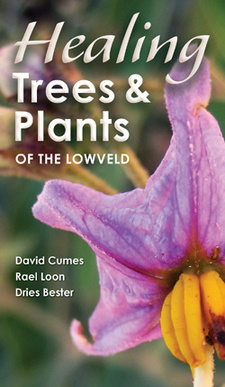
Healing trees and plants of the Lowveld, by David Cumes, Rael Loon and Dries Bester. ISBN 9781770078338 / ISBN 978-1-77007-833-8
David Cumes, Rael Loon and Dries Bester wrote this is a reference book for healers, botanists, and interested amateurs who do not have access to all the published works on Southern African healing plants or who do not have the time to cross-check the medicinal uses of these plants from the many excellent resources available.
David Cumes Rael Loon Dries Bester
Some of the plants have dozens of uses, sometimes conflicting, e.g., a certain plant may be used for constipation but also for diarrhoea. The book stresses the main uses of these plants gleaned by reviewing and comparing the extensive lists of sources. Special attention has been paid to plants where there is pan-African use, denoting that these are clearly plants of power even though they may be used for differing complaints in various regions. Medicinal trees are the main source of medication for 80 per cent of Africa's sub-Saharan population. Pharmacological evidence for efficacy is sometimes scant due to limited research but there is little doubt that the traditional healer is a master at enhancing the placebo effect (whereas western medicine tends to minimize it). The competence of the healer may have a lot to do with his or her skill in manipulating this effect, though a pharmacological action cannot be discounted. One also has to take into account the power of the ancestral spirits invoked with a plant medicine or when a particular ritual is prescribed. The diagnosis is made from the spirit world either in trance, from a dream, or with the help of the divining bones, and the medicine dispensed may be a password to the ancestors to effect a specific healing. The plant usage is often prescribed according to the 'Law of Similars'. For instance, Kiaat, which has red bark, is used for blood disorders. In this way it is easier for the ancestral spirits to connect with the 'password' of the healer for that particular healing. Animal products used for healing have not been included in this book. These are usually prescribed also according to the 'Law of Similars.', e.g., lion fat to promote courage or a part of an elephant to give strength. The magical uses of plants have also not usually been included. There are no trained healers who use all the plants in their area, and the practitioner becomes familiar with a set repertoire of plants that he or she has found effective. Many healers 'dream' the plant that the patient will need. Modern society is now tending to take solace in ancient, non-scientific beliefs where traditional medicines have assured healthy relationships between the individual, the society, the ancestral spirits, nature and God. Healer, patient and 'Spirit' orthe ancestors are inseparable in this indigenous healing wisdom. With herbal medicine, the whole is more than its parts. Extracting and concentrating components as is done in western medicine, although often leading to powerful actions, also sometimes creates serious side effects. We relied heavily on sources like Gelfand etal, Mabogo, Coates-Palgrave, Van Wyk, Gericke, Schmidt, Van Oudtshoorn, and others, who did the groundwork for a synthesis of this kind. The authors have added from their own experience in the field, usually gleaned from traditional healers. This publication is not intended for self-medication and hence no therapeutic regimens are given. The concentration of active substances varies according to season and rainfall. Safe dosages can only be decided by an experienced traditional healer who knows when to collect the medicine and howto prepare it. Some plants are highly toxic and the gap between therapeutic effectiveness and severe side effects and even death is often very narrow. Hence the authors urge extreme caution with the poisonous plants listed in the text, indicated by the symbol. The trees and plants are arranged in alphabetical order for easy reference. Scientific and vernacular names are both used. The Bantu vernacular names, unless otherwise stated, are given in Venda. Numbers following the scientific names refer to the National Tree List (Van Breitenbach, et al, 2002). In that easily obtainable and handy pocket guide, drawings of many of the species can be found. For an excellent guide to tree identification, see Field Guide to the Trees of Southern Africa by B. van Wyk and P. Van Wyk, Struik Publishers, 1997.
This is an excerpt from the plant guide: Healing trees and plants of the Lowveld, by David Cumes, Rael Loon and Dries Bester.
Title: Healing trees and plants of the Lowveld
Author: David Cumes; Rael Loon; Dries Bester
Type: Plant guide
Imprint: Nature
Publisher: Randomhouse Struik
Cape Town, South Africa 2009
ISBN 9781770078338 / ISBN 978-1-77007-833-8
Softcover, 10x18 cm, 112 pages, numerous photos
Cumes, David und Loon, Rael und Bester, Dries im Namibiana-Buchangebot
Healing trees and plants of the Lowveld
Healing trees and plants of the Lowveld is a pocket field guide and detailed reference book for healers, botanists and professional guides.
Birds. The Inside Story. Exploring birds and their behaviour in southern Africa
Birds: The Inside Story is brightly illustrated with a multitude of clear colour photographs and informative graphics.
Weitere Buchempfehlungen
Kruger National Park: Questions & Answers
Kruger National Park: Questions & Answers is a compilation of the questions most frequently asked by visitors to the Park.
Alien & Invasive Animals: A South African Perspective
Alien & Invasive Animals is the first book to be published on alien animals from the South African perspective.

